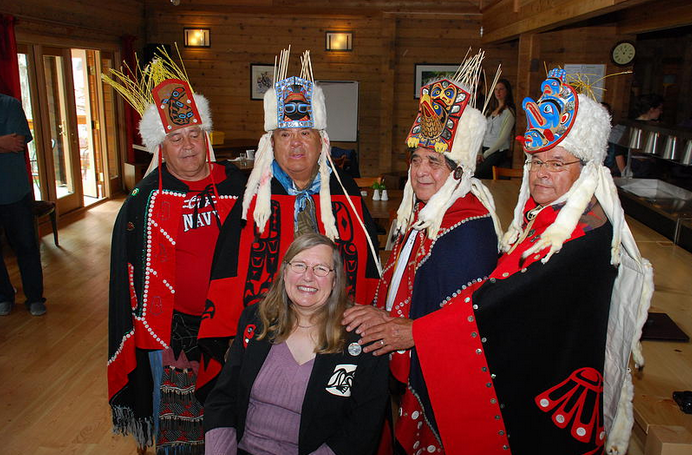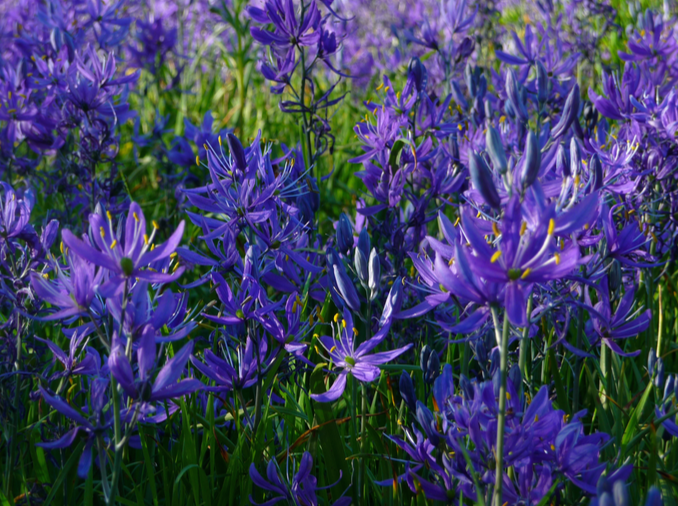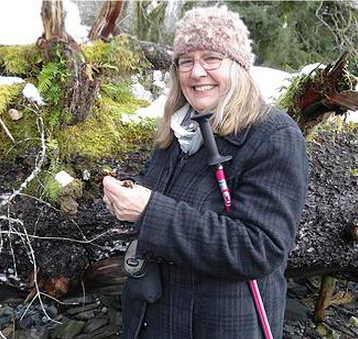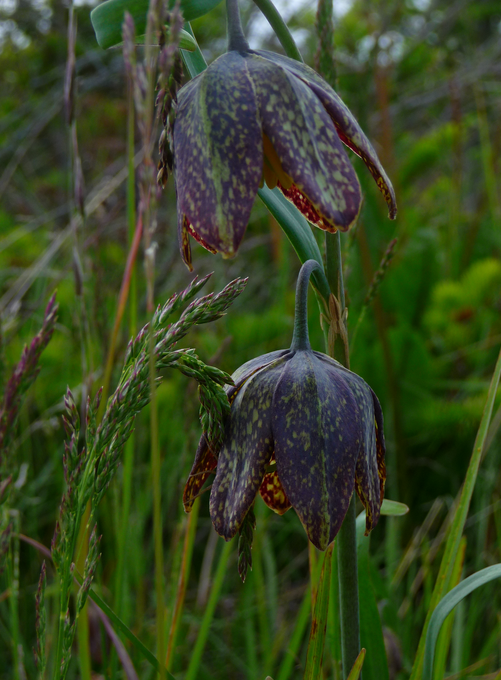
Sharing indigenous knowledge for a more sustainable world

Dr Nancy Turner welcomed by Heiltsuk chiefs (from left to right) Chief Kenny Campbell, Chief Mel Innes, Chief Harvey Humchitt and Chief Gary Housty. Credit: B. Doman.
From edible wild fruits to traditional land management systems, ethnobotanist and ethnoecologist Dr Nancy Turner’s work centres on the relationships between people, plants and environment. Focusing on work with indigenous plant experts of northwestern North America, the Distinguished Professor studies traditional knowledge and resource management systems that can help inform modern sustainability. Her words remind us all to take the time to appreciate the beauty in the diversity around us.
What drew you to ethnobotany?
I grew up in a family with a lot of natural history. My grandfather was an entomologist who studied ants in the Philippines and my dad was an entomologist who studied bark beetles and insect pheromones. I spent a lot of my early years outdoors with my family and developed a great love of plants, birds and everything else in nature from the time I was five or six years old.
By the time I was 10 or 12 I knew I wanted to study plants. I gravitated to ethnobotany because I was always interested in how people use plants – edible wild plants and plants used for dyes and fibres and so forth. As soon as I discovered there was a field known as ethnobotany as a legitimate education I decided that’s what I would be.
What is the most exciting part of your work?
To spend time with amazing people who are so familiar with their territory, their land and their plants and to go out with them on the water and the land. It’s just endlessly fascinating, fun and educational. It’s such a privilege to go to so many special places – places that a lot of people never get a chance to see.
Your work integrates botany, anthropology, geography, ecology and linguistics. Can you give an example?
There are 30 indigenous languages spoken around British Columbia, Canada alone. Each language has its own set of vocabulary around plants. If a plant is named in a language, it has some importance to it; sometimes the names reflect particular uses or features of plants.
If you investigate those languages, you can see the ways that the plant names have disseminated and you can see ties between groups of people if they have a common or related name for the same plant. You can see trade routes where plant products were exchanged from the coast to the interior or where people shared knowledge up and down the coast. Linguists can sometimes trace back plant names that were embedded in the very early ancestral languages of 6,000 or 7,000 years ago.

A meadow of camas flowers. Camas bulbs were traded by First Nations all along the west coast of Vancouver Island, Canada. Credit: Keith Battersby.
Your work is at the intersection of nature and people. Do you think enough environmentalists successfully bridge those two worlds?
I think it’s something that all of us need to work at more. Many scientists don’t really recognize indigenous peoples’ knowledge as being relevant. Sometimes that knowledge can be metaphorical, and at a different plane from detailed scientific knowledge; it’s a different way of knowing, a different way of passing on information, with different values.
If you study how people relate to plants, there’s a spiritual level to it and a relationship value that has been called ‘kincentric.’ Instead of putting humans at the top of the pyramid of the best, the most intelligent, with rights that no other species have, in a lot of First Nations’ societies, trees and animals are looked on as equal or superior to humans. It gives a different aspect to our relationship with the environment that I think a lot of people could really benefit from.

Courtesy of Dr Nancy Turner.
What skills are important to work at the intersection of science and people?
You have to really enjoy working with people and be willing to listen and be patient. At the same time, you need to have a depth of knowledge about the species that you’re working with.
I look on the First Nations elders and experts that I work with as my teachers but I also share some of my knowledge with them. It’s being willing to listen and learn and consider yourself a student, at the same time as having your own skills, knowledge and interests that you’re able to bring to the circle.
How do you show the value of indigenous knowledge and help give it a voice in decisions?
I look at indigenous knowledge as a system of knowledge. Every community has its own body of knowledge that is based on in their land, their territory and the species that they know well. Certain parts of the knowledge integrate very well with western scientific knowledge: what species occur and their habitats, the timing of reproductive cycles and growth, and understanding weather patterns. I’ve called that ‘practical knowledge for sustainable living.’
The mismatch is in the belief and value systems that go with that knowledge, as well as the way knowledge is communicated. As western-trained scientists, most of us learn our science in labs, in classrooms sitting in chairs with a blackboard. For First Nations, a lot of that knowledge is learned by very young children, out on the land with their parents and grandparents, picking up skills and knowledge through practising, stories and teachings.

Chocolate lily, a root vegetable cultivated by Indigenous Peoples in British Columbia, Canada. Credit: Keith Battersby.
The main thing is to appreciate that First Peoples have their own beliefs and spirituality that tie them to their places and to the other species that they depend on. For western scientists, you don’t have to yourself believe those things, but you have to respect those as legitimate beliefs that have allowed people to survive and live sustainably.
Sometimes science institutions tend to consider themselves to be THE academic training unit. But any scientists will appreciate that communication of their knowledge is extremely important for any successful application. You have to learn more than just the facts and details; you have to learn ways of respectfully sharing your knowledge with others and being willing to receive new knowledge in ways that are respectful.
If you could give a single piece of advice to aspiring conservationists, what would it be?
Don’t get discouraged. There are so many people who ask me, ‘Don’t you ever get discouraged by all the bad things that are happening in the world?” It would be easy to get discouraged at times, but we just have to look around us and see the amazing world that we live in – how fortunate we are, how beautiful it is – and just celebrate that beauty and do what we can.
Be easy on yourselves – take the time to enjoy and appreciate what you see and what you get to experience. It could be in your backyard or it can be anywhere in the world; there’s beauty, interest and fascination everywhere you look. I always think of myself as just part of a great circle of people – people who enjoy nature and diversity and are all working to the same goals. I think that helps, to realize that you’re not alone in this – there are so many people out there who have a similar appreciation of the world.
How has working with indigenous communities influenced you personally?
It has enriched my life in so many ways. It’s given me an appreciation for things that I never realized or thought about and provided me with so many wonderful friends and family. It’s hard to imagine what life would be like if I hadn’t had all those experiences. It’s just part of who I am.
To learn more about Dr Nancy Turner’s work, you can visit her website or read about her recent book ‘Ancient Pathways, Ancestral Knowledge: Ethnobotany and Ecological Wisdom of Indigenous Peoples of Northwestern North America’ in an article by Focus Online.
Are you interested in a career focussed on indigenous plants? Check out our Ultimate Guide How to become a botanist!

